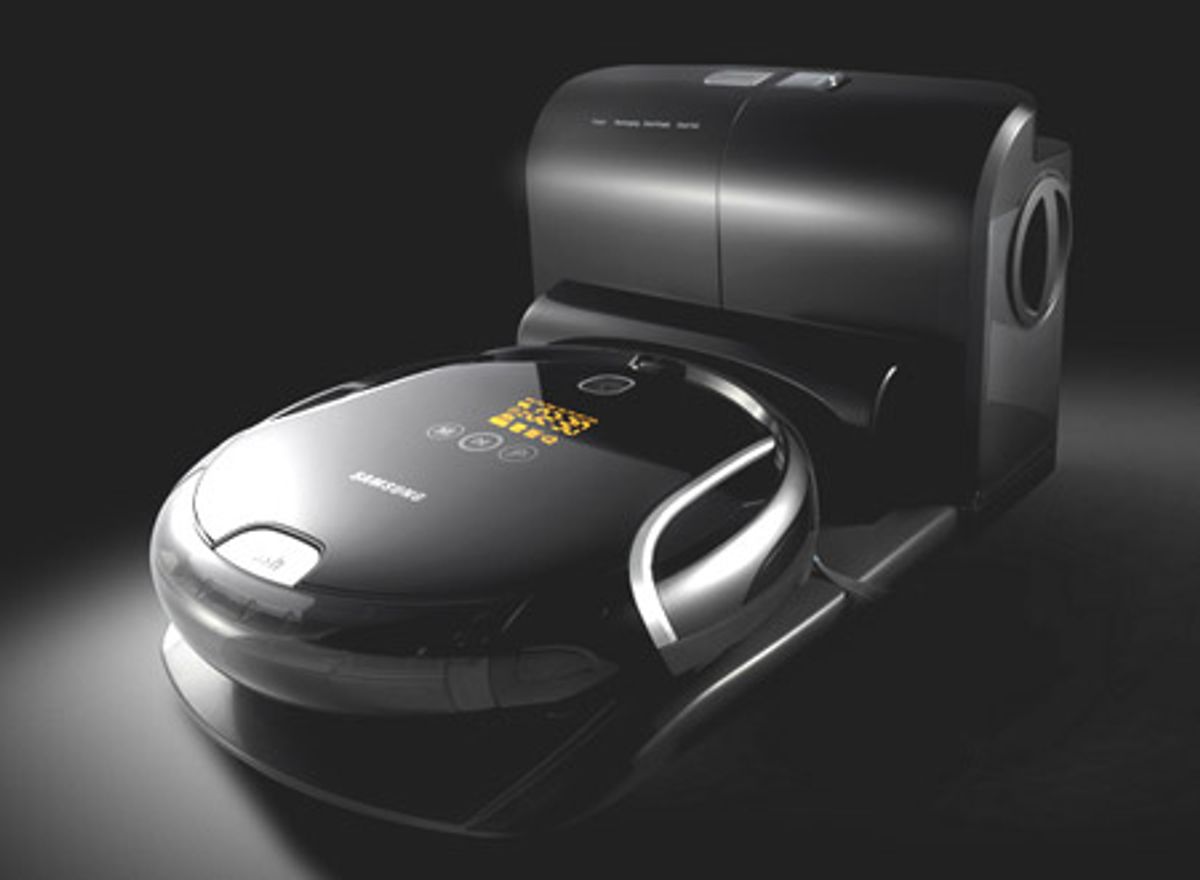The 2012 Consumer Electronics Show was not a big launching point for robotics companies this year. We saw Pleos, Paros, Paperos, and other familiar robots that didn't start with the letter "P" like Naos and Cubelets (not to mention Tosy's robotic boombox presented by Justin Bieber). Even iRobot decided not to put on an appearance: They were at CES taking meetings, but without a big booth presence like they've had in years past.
But we're always looking for what's coming next, and we did find one thing that got us excited. If you own a robotic vacuum cleaner, you probably know that one of the most annoying things about these devices is that when their dust bin is full, you have to clean your cleaning robot. The good news is that at CES we saw a couple of robot vacuums from Asia that come with docking stations capable of emptying the dust bins automatically.
These are not the first robot vacuums to have the self-emptying dustbin feature. We've already seen one German vacuum that costs US $1,300 that can do this, and iRobot has had a patent on the books for a few years now, though the company hasn't made any announcements. So it's nice to see this feature, which we've been looking for since, well, forever, moving closer to becoming a mainstream option for consumers.
The first one comes from a company that you've probably never heard of called Ecovacs. They're based out of China, and their Deebot D76 sports the following tagline: "It's a vacuum cleaner, it's a robot, and it's anything you want it to be! Use Deebot D76 as anything you like!" Wow, that's pretty awesome, but let's just stick with using it as a vacuum for now, okay?
Deebot moves around using "28 radar navigators," which we take to mean that it doesn't make active maps. It cleans, avoids obstacles, doesn't fall off of things, etc. but the interesting bit is the charging dock with an integrated vacuum system that both sucks the dirt out of the robot's vacuum bin and doubles as a portable vacuum cleaner. Here it is in operation:
The second vacuum comes from a company that you've definitely heard of: Samsung. The NaviBot-S includes an "auto dust emptying system," and when the robot senses that its dust bin is full, it heads back to the dock to get its dust sucked out, and as a plus it also gets its brushes cleaned to boot. Since the NaviBot makes an active map as it goes (using a camera pointed at the ceiling along with infrared sensors), it can then head back to right where it left off to finish cleaning the room.
Nobody at the Samsung booth seemed to have much of a clue about what the deal was with the new dock, but we managed to snap some pics of a presentation playing on screens underneath robot itself, and we also dug up an Australian press release. Here are some pics of how the system works:
And here's an overview video from CES that probably won't tell you too much more:
Supposedly you'll be able to buy these vacuums in the United States within a year or two. But we should mention that we hear this type of thing nearly every single year at CES and nothing ever happens. It does seem likely that Samsung's Navibot will show up in Australia, but contrary to what we heard from the Samsung reps, a U.S. launch isn't necessarily going to follow (one issue is iRobot's intimidating arsenal of robot vacuum patents). And as for the Deebot, well, that's even less certain.
Self-emptying dust bins do seem like a logical (if incremental) next step in the evolution of robot vacuums, and if nothing else, it's nice to see a little bit of innovation in the consumer space at a show where the other big robot news involved a teenage pop star.
[ Ecovacs ]
[ Samsung Navibot ]
Erico Guizzo is the director of digital innovation at IEEE Spectrum, and cofounder of the IEEE Robots Guide, an award-winning interactive site about robotics. He oversees the operation, integration, and new feature development for all digital properties and platforms, including the Spectrum website, newsletters, CMS, editorial workflow systems, and analytics and AI tools. An IEEE Member, he is an electrical engineer by training and has a master’s degree in science writing from MIT.








